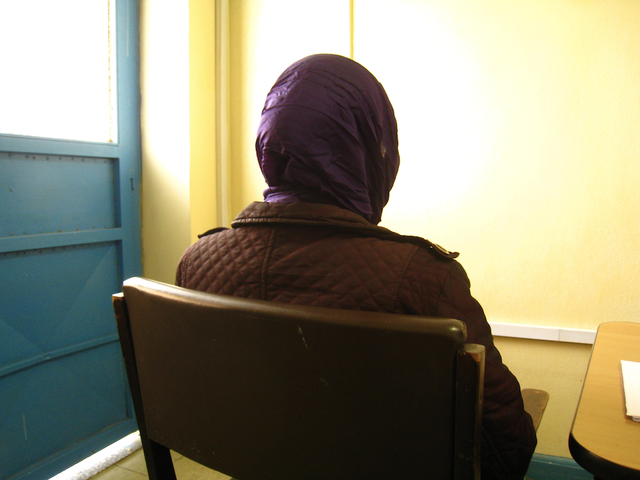 Zebiba waits for her abortion to be completed. (Photo: Heather Horn/GlobalPost
Zebiba waits for her abortion to be completed. (Photo: Heather Horn/GlobalPost
By Heather Horn
ADDIS ABABA, Ethiopia — Zebiba, 28, sits in her purple headscarf in the small clinic room, the cramping already beginning. She took the tablets early this morning. She is three months pregnant.
By 2 p.m., her abortion should be complete. She will return to her two children, now at school. She is divorcing their father, who has taken a second wife.
Thus far, she has refused pain medications. Her relief at the ease of this termination is palpable. “She was nervous coming here,” says the nurse.
A generation ago, botched abortions were the single biggest contributor to Ethiopia’s sky-high maternal mortality rate. Doctors in the largest public hospital in Addis Ababa, where Zebiba lives, still remember the time when three-quarters of the beds in the maternal ward were reserved purely for complications from such procedures.
Then, in 2005, the country liberalized its abortion law.
Today, it’s hard to find a health provider who’s seen more than one abortion-related death in the past five years. Although access to safe procedures and high quality care could still be expanded, doctors say that, increasingly, those who need an abortion can get one safely.
But this success story has a catch: abortion is still illegal. Only under very limited circumstances is it allowed, and Zebiba’s case does not fall into one of the specified categories.
Many of the women whose lives doctors and NGOs have saved in the past few years have been ushered through a legal loophole — and it’s possible that’s what the government intended all along.
Read more at globalpost.com »
—
Join the conversation on Twitter and Facebook.

























